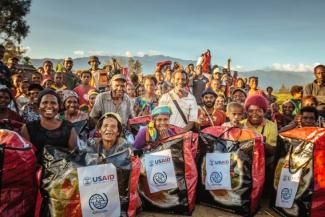Globally, USAID responds to an average of 65 disasters, in more than 50 countries, every year. Countries in the Pacific experience a wide range of hazards, including cyclones, floods, drought, earthquakes, tsunamis, and volcanic eruptions. Meanwhile, extreme climate variations are presenting new risks, including changes in rainfall patterns, increased severity of storms, and rises in sea levels. Poverty, population growth, and rapid urbanization all exacerbate these vulnerabilities. USAID leads and coordinates the U.S. government’s response to disasters overseas. The types of disasters that USAID responds to are rapid onset disasters, such as earthquakes, volcanoes and floods and slow onset crises, such as drought and conflict. In partnership with other operating units of USAID and other U.S. government agencies, USAID saves lives, alleviates human suffering, and reduces the social and economic impact of disasters worldwide.

